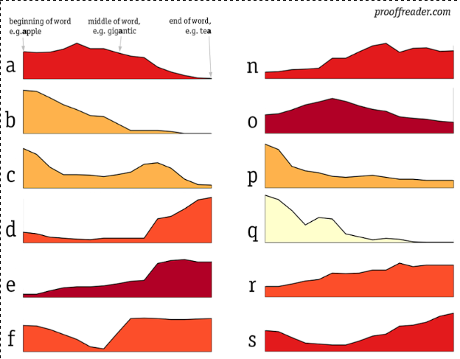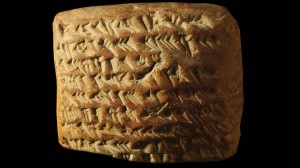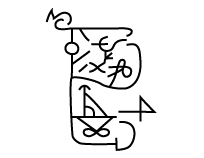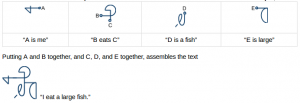Green’s Dictionary of Slang
From the about page:
Green’s Dictionary of Slang is the largest historical dictionary of English slang. Written by Jonathon Green over 17 years from 1993, it reached the printed page in 2010 in a three-volume set containing nearly 100,000 entries supported by over 400,000 citations from c. ad 1000 to the present day. The main focus of the dictionary is the coverage of over 500 years of slang from c. 1500 onwards.
The printed version of the dictionary received the Dartmouth Medal for outstanding works of reference from the American Library Association in 2012; fellow recipients include the Dictionary of American Regional English, the Oxford Dictionary of National Biography, and the New Grove Dictionary of Music and Musicians. It has been hailed by the American New York Times as ‘the pièce de résistance of English slang studies’ and by the British Sunday Times as ‘a stupendous achievement, in range, meticulous scholarship, and not least entertainment value’.
On this website the dictionary is now available in updated online form for the first time, complete with advanced search tools enabling search by definition and history, and an expanded bibliography of slang sources from the early modern period to the present day. Since the print edition, nearly 60,000 quotations have been added, supporting 5,000 new senses in 2,500 new entries and sub-entries, of which around half are new slang terms from the last five years.
Green’s Dictionary of Slang has an interesting commercial model.
You can search for any word, freely, but “more search features” requires a subscription:
By subscribing to Green’s Dictionary of Slang Online, you gain access to advanced search tools (including the ability to search for words by meaning, history, and usage), full historical citations in each entry, and a bibliography of over 9,000 slang sources.
Current rate for individuals is £ 49 (or about $59.96).
In addition to being a fascinating collection of information, is the free/commercial split here of interest?
An alternative to:
The Teaser Model
Contrast the Oxford Music Online:
Grove Music Online is the eighth edition of Grove’s Dictionary of Music and Musicians, and contains articles commissioned specifically for the site as well as articles from New Grove 2001, Grove Opera, and Grove Jazz. The recently published second editions of The Grove Dictionary of American Music and The Grove Dictionary of Musical Instruments are still being put online, and new articles are added to GMO with each site update.
Oh, Oxford Music Online isn’t all pay-per-view.
It offers the following thirteen (13) articles for free viewing:
Sotiria Bellou, Greek singer of rebetiko song, famous for the special quality and register of her voice
Cell [Mobile] Phone Orchestra, ensemble of performers using programmable mobile (cellular) phones
Crete, largest and most populous of the Greek islands
Lyuba Encheva, Bulgarian pianist and teacher
Gaaw, generic term for drums, and specifically the frame drum, of the Tlingit and Haida peoples of Alaska
Johanna Kinkel, German composer, writer, pianist, music teacher, and conductor
Lady’s Glove Controller, modified glove that can control sound, mechanical devices, and lights
Outsider music, a loosely related set of recordings that do not fit well within any pre-existing generic framework
Peter (Joshua) Sculthorpe, Australian composer, seen by the Australian musical public as the most nationally representative.
Slovenia, country in southern Central Europe
Sound art, a term ecompassing a variety of art forms that utlize sound, or comment on auditory cultures
Alice (Bigelow) Tully, American singer and music philanthropist
Wars in Iraq and Afghanistan, soliders’ relationship with music is largely shaped by contemporary audio technology
Hmmm, 160,000 slang terms for free from Green’s Dictionary of Slang versus 13 free articles from Oxford Music Online.
Show of hands for the teaser model of Oxford Music Online?
The Consumer As Product
You are aware that casual web browsing and alleged “free” sites are not just supported by ads, but by the information they collect on you?
Consider this rather boastful touting of information collection capabilities:
…
To collect online data, we use our native tracking tags as experience has shown that other methods require a great deal of time, effort and cost on both ends and almost never yield satisfactory coverage or results since they depend on data provided by third parties or compiled by humans (!!), without being able to verify the quality of the information. We have a simple universal server-side tag that works with most tag managers. Collecting offline marketing data is a bit trickier. For TV and radio, we will with your offline advertising agency to collect post-log reports on a weekly basis, transmitted to a secure FTP. Typical parameters include flight and cost, date/time stamp, network, program, creative length, time of spot, GRP, etc.
Convertro is also able to collect other type of offline data, such as in-store sales, phone orders or catalog feeds. Our most popular proprietary solution involves placing a view pixel within a confirmation email. This makes it possible for our customers to tie these users to prior online activity without sharing private user information with us. For some customers, we are able to match almost 100% of offline sales. Other customers that have different conversion data can feed them into our system and match it to online activity by partnering with LiveRamp. These matches usually have a success rate between 30%-50%. Phone orders are tracked by utilizing a smart combination of our in-house approach, the inputting of special codes, or by third party vendors such as Mongoose and ResponseTap.v
…
You don’t have to be on the web, you can be tracked “in-store,” on the phone, etc.
Converto doesn’t mention explicitly “supercookies,” for which Verizon just paid a $1.35 Million fine. From the post:
…
“Supercookies,” known officially as unique identifier headers [UIDH], are short-term serial numbers used by corporations to track customer data for advertising purposes. According to Jacob Hoffman-Andrews, a technologist with the Electronic Frontier Foundation, these cookies can be read by any web server one visits used to build individual profiles of internet habits. These cookies are hard to detect, and even harder to get rid of.
…
If any of that sounds objectionable to you, remember that to be valuable, user habits must be tracked.
That is if you find the idea of being a product acceptable.
The Green’s Dictionary of Slang offers an economic model that enables free access to casual users, kids writing book reports, journalists, etc., while at the same time creating a value-add that power users will pay for.
Other examples of value-add models with free access to the core information?
What would that look like for the Podesta emails?




